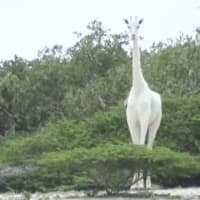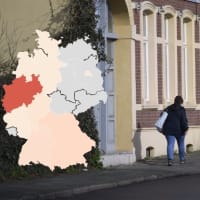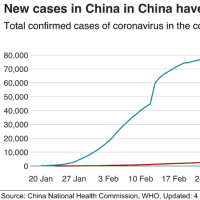2018年2月8日(Thu.) 日中の気温も5℃程度で、まだまだ寒い日が続きそうです(愛知県平野部)。 そんな中、久しぶりに近くの川沿いを散歩しましたが、いつもより多くの鴨を見かけました。 他に、鵜、白鷺、青鷺なども。 そして美しいカワセミにも出会うことができました。
さて、デンマークでは鳥の数が相当数減っていると報じています。 ( ニュースソース: THE LOCAL.dk 2月6日発 )
<原文の一部>
'Three million' birds flew from Denmark since 1970s: report
1970年代以来、3百万もの鳥がデンマークからいなくなっています。

The yellow hammer (Emberiza citrinella) is one of the bird species to have seen a decline. File photo: Steffen Ortmann/Scanpix Denmark (キアオジは、減少が見られる鳥の一つです。)
Nearly three million birds have disappeared from Denmark's farmlands in the space of four decades, according to a report.
発表によると、40年の間に、3百万近くの鳥がデンマークから消えています。
15 of 22 species of bird connected to farmland habitats have shrunk in population size, while seven species have increased, reports the Fugle & Nature (Birds and Nature) magazine.
Counts by the Danish Ornithological Society (DOF) over the last 40 years have shown significant reductions - in some cases well over 50 percent - in populations of species such as the northern lapwing, grey partridge and skylark over that time.
(抜粋)農地を生息地としている鳥22種の中の15種で生息数の減少が見られます、7種は増加しているのですが。 Birds and Nature magazine の発表によります。 40年以上にわたるデンマーク鳥類学会( DOF ) の調査によると、著しい減少が示されています。 いくつかの例では50%以上もです。 北タゲリ、ヤマウズラ、ヒバリなどが該当しています。(一部、意訳)
DOF expert Niels Andersen found an overall loss in arable land populations of 2,950,000 birds after comparing figures with overall population estimates recorded by DOF in 2011.
The result of the analysis shows a dramatic decrease in bird populations in farmland areas, Andersen said.
"This shows that we have lost a lot of everyday nature over the last 40 years. A few generations ago, many of us grew up in the country and had the lapwing's screech imprinted on our brains, or grew up listening to the skylark's song," he said.
(抜粋)DOFの専門家は、農地における全体としての減少は推定で 2,950,000 になります。 分析結果は、農耕地エリアでの鳥の生息数が劇的に減少していることを示しています。 このことは、近年の40年間にわたって、多くの日常的な自然が失われていることを示しています。 数世代前は、私達の多くは田舎で育ち、タゲリの鳴き声が私達の脳裏に焼きついていたものでしたし、または、ヒバリの歌声を聴きながら育ったものですと専門家は語っています。
Other species to be affected by the fall in populations include the yellowhammer, common linnet and swallow.
"The advance of agricultural production has had a price for biological diversity. The small biotopes where farmland birds could find a habitat are gone," Andersen said.
DOF chairperson Egon Østergaard said there was no quick fix to the problem.
(抜粋)減少しているその他の種類としては、キアオジ、ムネアカヒワ、そして、ツバメが含まれています。 農業生産の進歩は、生物多様性の代償を支払うことになっていて、農地で生息する鳥のための小さなビオトープはなくなってしまったとも言います。
一方、DOFの議長は、問題をすばやく解決する方法はないと語っています。
"This is caused by a changed in agricultural methods, and that animals now live in stables. We could appeal to farmers to not remove the last natural areas out there. But it is economic factors that determine how farmers must work their land," Østergaard said.
Farmers who prioritise natural habitats should be more highly rewarded, he added.
The DOF chairperson said he hoped changes to the EU's agricultural support policies in 2020 could bring potential improvements to the situation.
(抜粋)農法の変化が原因となっており、家畜は厩舎で育てられています。 私たちは農業を営む人に対し、最後の自然のエリアをなくさないようにと訴えています。 しかし、どのように扱うかは彼らの経済的な要素も関連していると議長が述べています。 自然の生息地を優先させる農家の人には、もっと高い報酬となるようにすべきだとも言います。
DOF議長は、2020年のEU農業支援政策の改訂が、この状況の改善につながるようなものになるよう期待していると述べています。
***
生物にとってのビオトープの減少だけでなく、農薬使用による虫の激減が、食物連鎖の結果として、鳥の生息数の減少にもつながっていると言われています。 例のミツバチや蝶などの受粉虫の激減問題も関連していることなのでしょう。
効率やコストなどを優先することが、生物多様性などに大きな代償を支払うことに帰結しているとも言えるのでしょう。 学んだことがあれば、それに基づいて軌道修正するなどの英断が必要でしょう、何事も。
*** 下の写真は、記事内容とは関係ありません。

***
さて、デンマークでは鳥の数が相当数減っていると報じています。 ( ニュースソース: THE LOCAL.dk 2月6日発 )
<原文の一部>
'Three million' birds flew from Denmark since 1970s: report
1970年代以来、3百万もの鳥がデンマークからいなくなっています。

The yellow hammer (Emberiza citrinella) is one of the bird species to have seen a decline. File photo: Steffen Ortmann/Scanpix Denmark (キアオジは、減少が見られる鳥の一つです。)
Nearly three million birds have disappeared from Denmark's farmlands in the space of four decades, according to a report.
発表によると、40年の間に、3百万近くの鳥がデンマークから消えています。
15 of 22 species of bird connected to farmland habitats have shrunk in population size, while seven species have increased, reports the Fugle & Nature (Birds and Nature) magazine.
Counts by the Danish Ornithological Society (DOF) over the last 40 years have shown significant reductions - in some cases well over 50 percent - in populations of species such as the northern lapwing, grey partridge and skylark over that time.
(抜粋)農地を生息地としている鳥22種の中の15種で生息数の減少が見られます、7種は増加しているのですが。 Birds and Nature magazine の発表によります。 40年以上にわたるデンマーク鳥類学会( DOF ) の調査によると、著しい減少が示されています。 いくつかの例では50%以上もです。 北タゲリ、ヤマウズラ、ヒバリなどが該当しています。(一部、意訳)
DOF expert Niels Andersen found an overall loss in arable land populations of 2,950,000 birds after comparing figures with overall population estimates recorded by DOF in 2011.
The result of the analysis shows a dramatic decrease in bird populations in farmland areas, Andersen said.
"This shows that we have lost a lot of everyday nature over the last 40 years. A few generations ago, many of us grew up in the country and had the lapwing's screech imprinted on our brains, or grew up listening to the skylark's song," he said.
(抜粋)DOFの専門家は、農地における全体としての減少は推定で 2,950,000 になります。 分析結果は、農耕地エリアでの鳥の生息数が劇的に減少していることを示しています。 このことは、近年の40年間にわたって、多くの日常的な自然が失われていることを示しています。 数世代前は、私達の多くは田舎で育ち、タゲリの鳴き声が私達の脳裏に焼きついていたものでしたし、または、ヒバリの歌声を聴きながら育ったものですと専門家は語っています。
Other species to be affected by the fall in populations include the yellowhammer, common linnet and swallow.
"The advance of agricultural production has had a price for biological diversity. The small biotopes where farmland birds could find a habitat are gone," Andersen said.
DOF chairperson Egon Østergaard said there was no quick fix to the problem.
(抜粋)減少しているその他の種類としては、キアオジ、ムネアカヒワ、そして、ツバメが含まれています。 農業生産の進歩は、生物多様性の代償を支払うことになっていて、農地で生息する鳥のための小さなビオトープはなくなってしまったとも言います。
一方、DOFの議長は、問題をすばやく解決する方法はないと語っています。
"This is caused by a changed in agricultural methods, and that animals now live in stables. We could appeal to farmers to not remove the last natural areas out there. But it is economic factors that determine how farmers must work their land," Østergaard said.
Farmers who prioritise natural habitats should be more highly rewarded, he added.
The DOF chairperson said he hoped changes to the EU's agricultural support policies in 2020 could bring potential improvements to the situation.
(抜粋)農法の変化が原因となっており、家畜は厩舎で育てられています。 私たちは農業を営む人に対し、最後の自然のエリアをなくさないようにと訴えています。 しかし、どのように扱うかは彼らの経済的な要素も関連していると議長が述べています。 自然の生息地を優先させる農家の人には、もっと高い報酬となるようにすべきだとも言います。
DOF議長は、2020年のEU農業支援政策の改訂が、この状況の改善につながるようなものになるよう期待していると述べています。
***
生物にとってのビオトープの減少だけでなく、農薬使用による虫の激減が、食物連鎖の結果として、鳥の生息数の減少にもつながっていると言われています。 例のミツバチや蝶などの受粉虫の激減問題も関連していることなのでしょう。
効率やコストなどを優先することが、生物多様性などに大きな代償を支払うことに帰結しているとも言えるのでしょう。 学んだことがあれば、それに基づいて軌道修正するなどの英断が必要でしょう、何事も。
*** 下の写真は、記事内容とは関係ありません。

***




















※コメント投稿者のブログIDはブログ作成者のみに通知されます